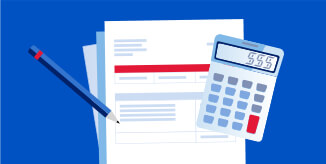What’s in your credit report—and why does it matter?
Read, 4 minutes
A credit report is a snapshot of your financial life. Lenders, employers, insurers and landlords can make decisions based on the contents of your report, and that information also determines your credit score. Knowing how to read and use your credit report prepares you to better manage your credit. You’ll be able to make sure the information is accurate. And you can reduce the chance of an unpleasant surprise when you apply for a loan.
Article continues below
Credit articles
What is a credit report?
A credit report shows your loans, credit cards and payment history, as well as whether you’ve filed for bankruptcy. The three major credit bureaus—Experian, Equifax and TransUnion—collect information from public records and companies you do business with and use that information to create your report. The report has four sections, and here’s what’s contained in each:
How do you obtain a credit report?
You might be able to get your credit report for free from your financial institution or credit card issuer, or you may have to pay to get it. Also, your credit report must be given to you free of charge once a year by each of the major credit bureaus if you ask for it. It’s important to check your reports from all three bureaus because they may contain slightly different information. That’s three opportunities a year to make sure the information kept on you and your credit is accurate—and to ensure that no one is fraudulently opening accounts in your name.
You’re also entitled to a free report if you apply for a credit card or loan and are declined.
What's the difference between a credit report and a credit score?
Your credit report is a history of your accounts and payments. Your credit score is a number generated from the details of your credit report. FICO, a company that provides credit scores, digs into those details and weights them by importance to calculate FICO® Scores. Scores generally range from 300 to 850. The higher the number, the better your credit. Ultimately, lenders can look at your credit report and credit score when deciding whether to lend you money, so paying attention to both is important.
What should you look for in a report?
First, make sure all of your personal information is correct. Then zero in on your credit history, especially the subsection called “adverse accounts.” It can show negative items like a past-due credit account or a debt that was sent to collections, which can hurt your credit.
You may find errors in this section that you’ll want to correct. Reach out first to the creditor and then to the credit bureaus. The Consumer Financial Protection Bureau, a federal agency, has a guide for disputing errors, including sample letters.
If an error looks fraudulent—for example, you see a mortgage for a house you don’t own—act quickly. Contact the credit bureaus and ask them to put a fraud alert on your account.
- Accounts belonging to someone with a similar name
- Accounts incorrectly reported as late or delinquent
- Same debt listed more than once
- Incorrect account balances or credit limits
Source: Consumer Financial Protection Bureau
How can a credit report help over time?
Good credit can set you up for other financial successes. For example, you may be more likely to receive a loan or you may qualify for a lower interest rate, which can save you money in the long run. A clean credit report—and its positive effect on your credit score—can make it easier to get rewards credit cards, which offer perks, such as travel deals or cash back. And you may qualify for higher credit limits on your cards.
